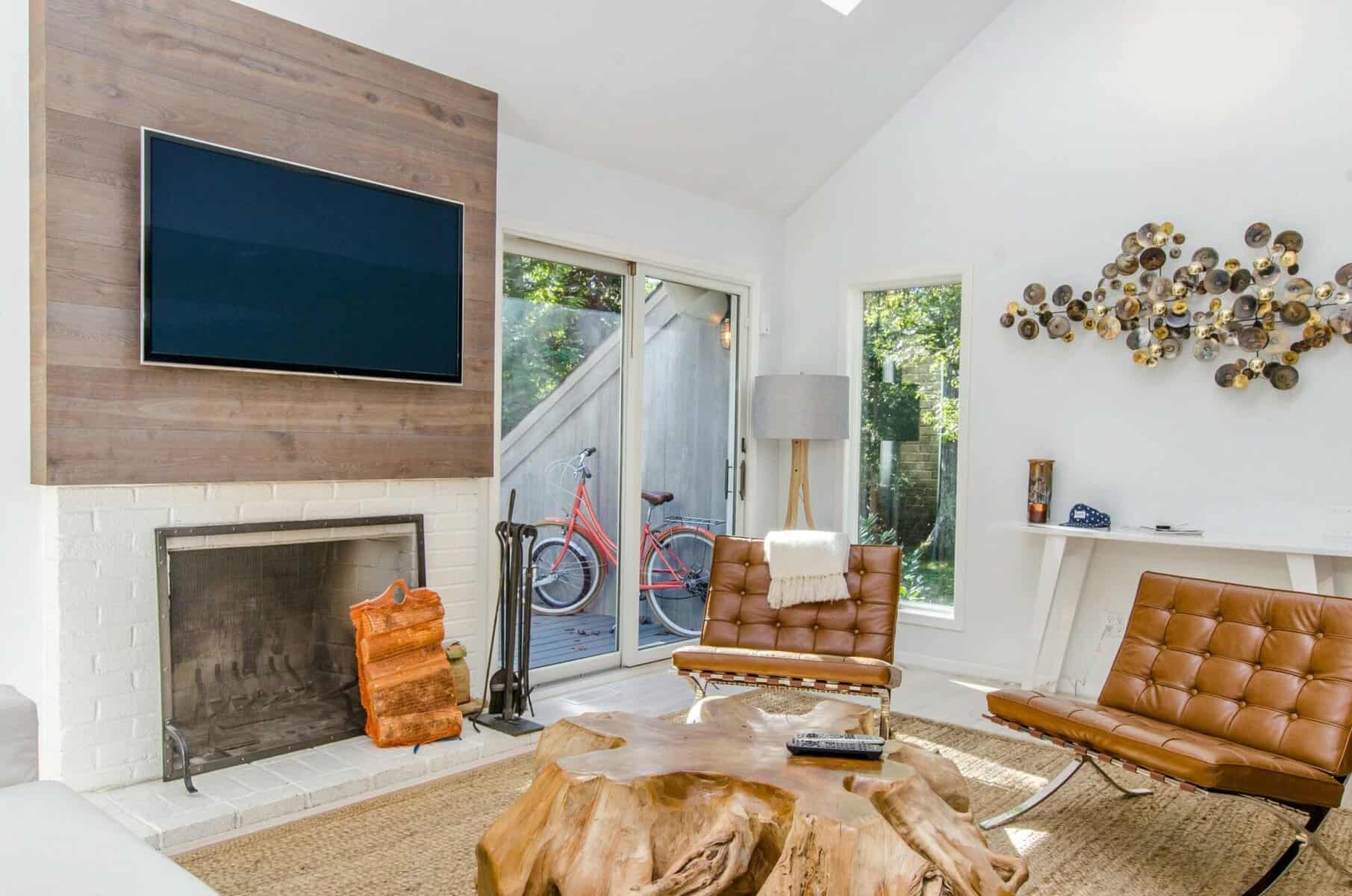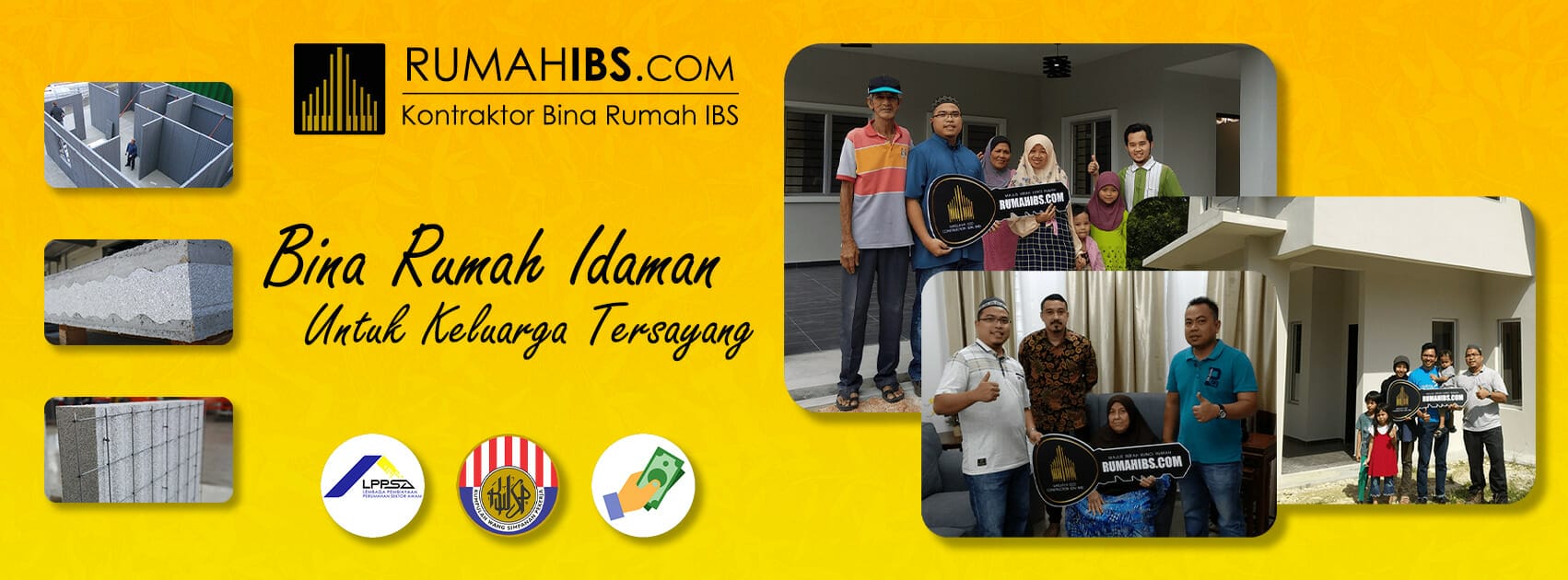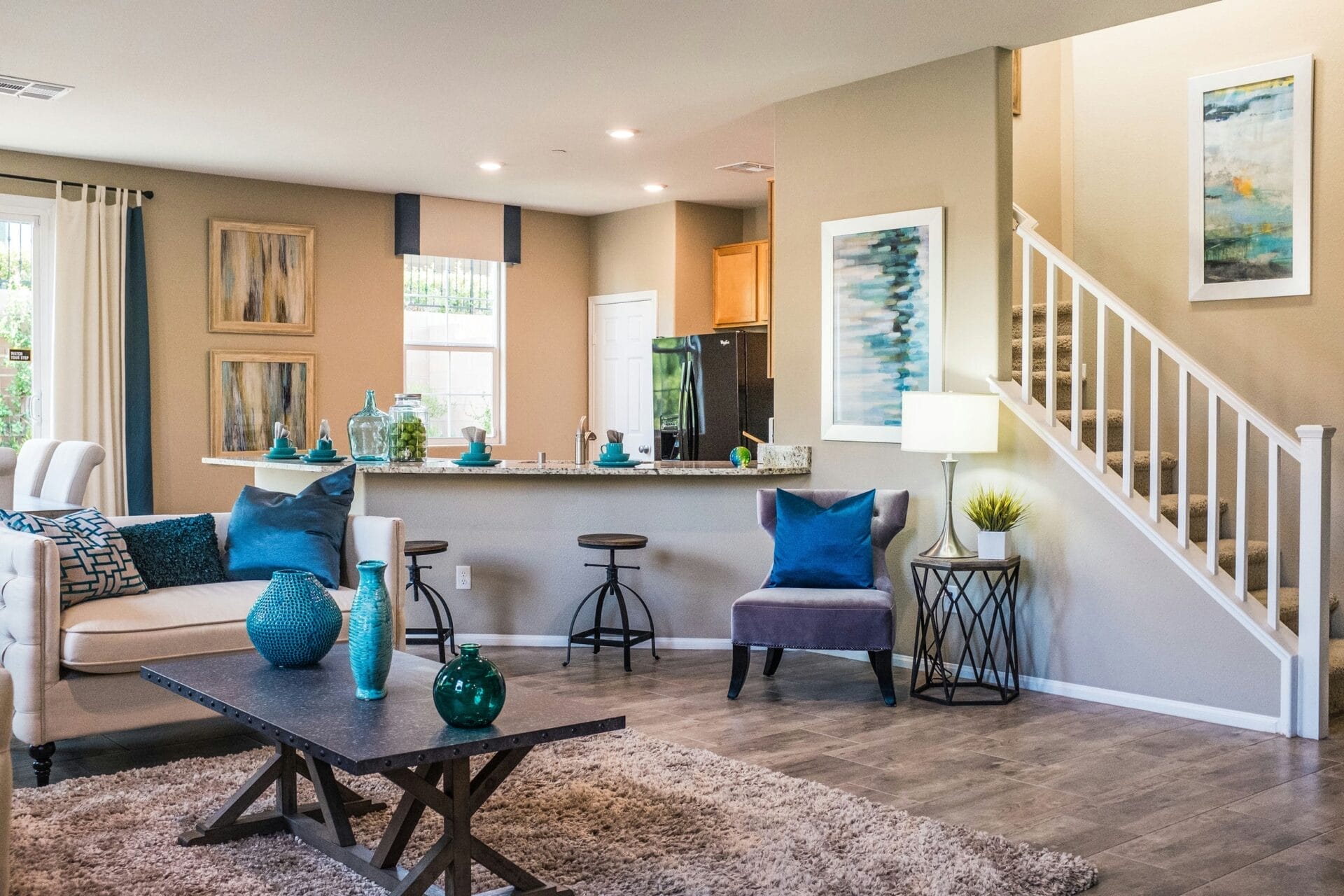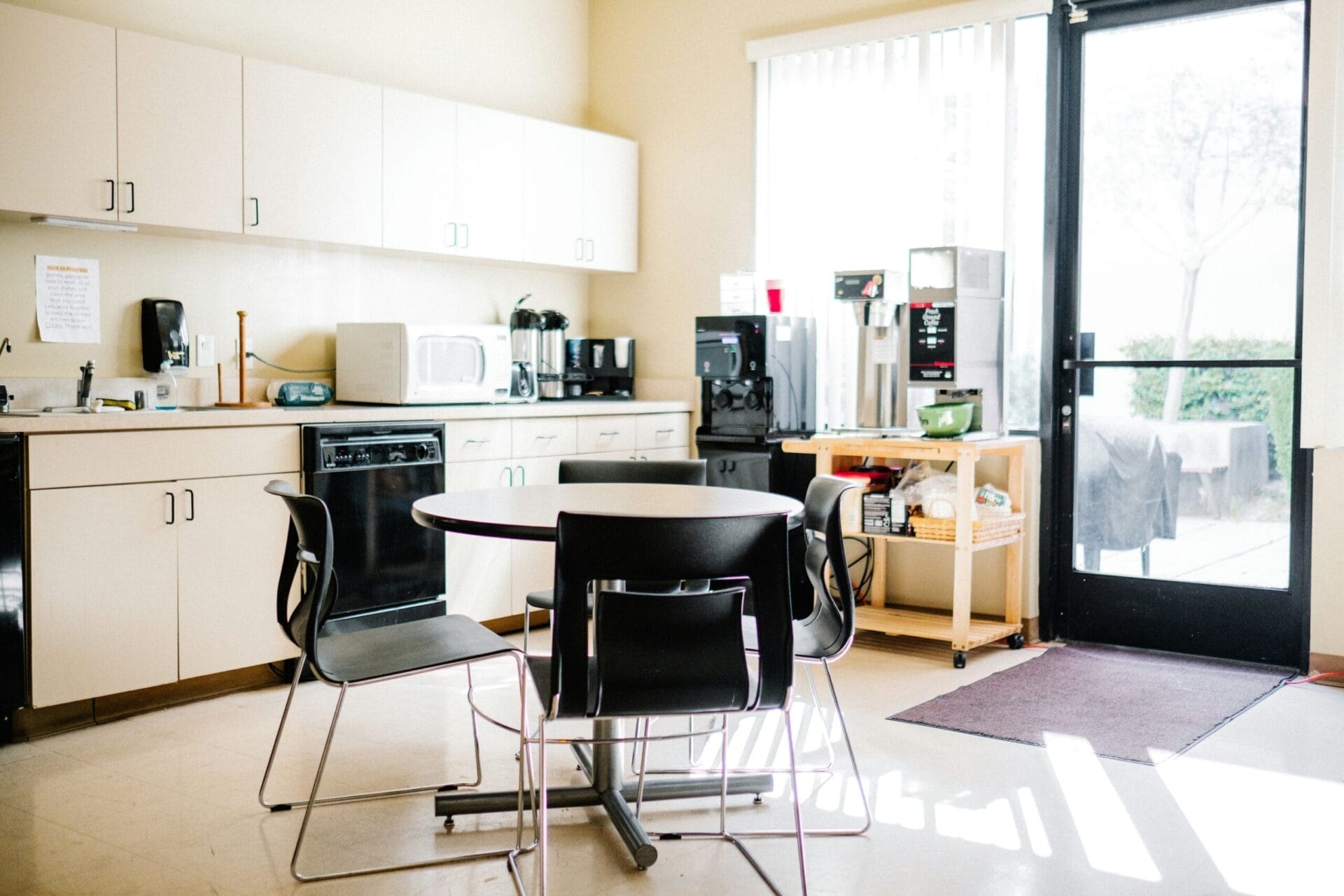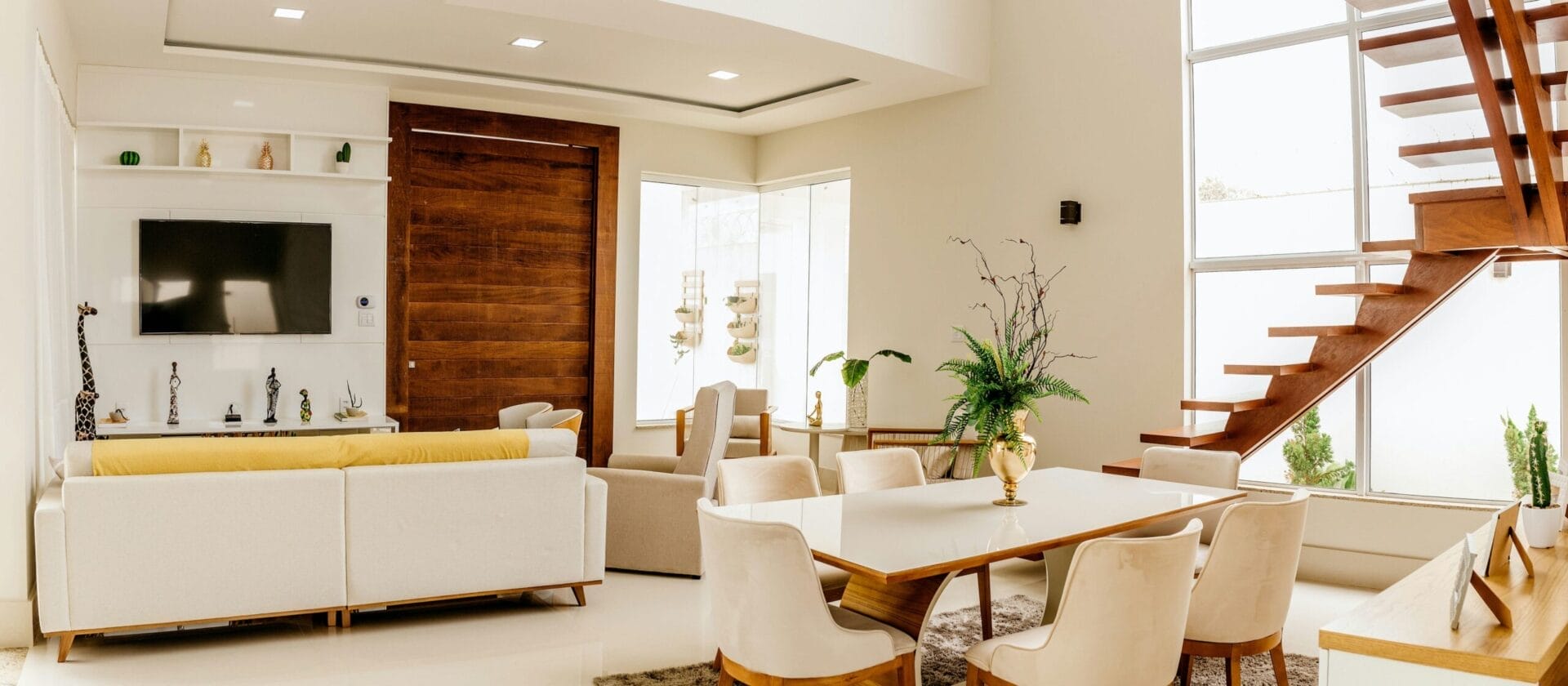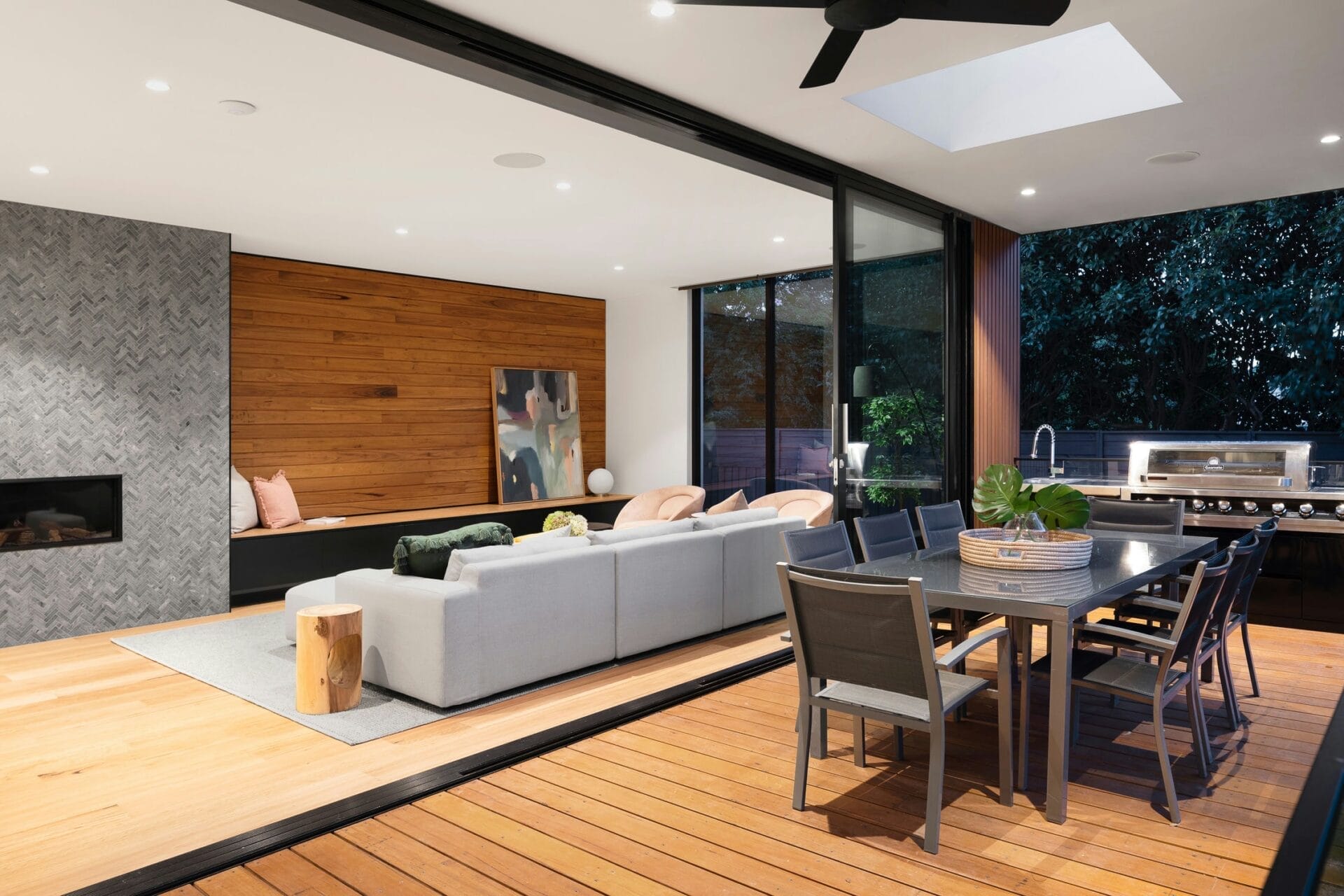Navigating the Landscape of House Construction: Trends, Costs, and Strategies for Homeowners and Contractors in 2024
1. Introduction
Welcome to the world of house construction in Malaysia in 2024! Whether you’re a homeowner dreaming of building your perfect abode or a contractor looking to make your mark in the industry, understanding the landscape of house construction is crucial for success. In this article, we’ll take a deep dive into the trends, costs, and strategies shaping house construction in Malaysia today.
Delving into the Malaysian House Construction Scene
The Malaysian house construction industry is a dynamic and ever-evolving landscape. With rapid urbanization and population growth, the demand for new housing continues to soar. From bustling cities to tranquil suburbs, construction sites dot the Malaysian landscape, each representing a dream in the making.
The Importance of Staying Informed
For both homeowners and contractors alike, staying informed about the latest trends and costs in house construction is paramount. It’s not just about building structures; it’s about building homes that stand the test of time, both in terms of quality and affordability.
A Guide for Homeowners and Contractors
Whether you’re embarking on your first house construction project or you’re a seasoned pro, this article is designed to be your guide through the maze of house construction in Malaysia. We’ll cover everything from understanding the role of contractors to analyzing construction costs and exploring affordable housing solutions.
Let’s Dive In!
So, grab a cup of teh tarik, settle into your favorite chair, and let’s embark on a journey through the fascinating world of house construction in Malaysia. By the end of this article, you’ll be armed with the knowledge and insights you need to navigate the complexities of house construction with confidence. Let’s get started!
Malaysian House Construction Statistics
Before we dive deeper into the intricacies of house construction, let’s take a quick look at some key statistics shaping the industry in Malaysia:
| Statistic | Value |
|---|---|
| Number of housing units constructed (2023) | 250,000 |
| Average cost per square foot of construction | RM 250 – RM 350 |
| Percentage of households living in owned homes | 75% |
| Projected growth rate of construction industry | 5-7% annually |
These statistics provide a snapshot of the bustling activity within the Malaysian house construction sector and set the stage for our exploration of this dynamic industry.

christian DS9Xc7AWmwQ unsplash scaled
2. Understanding the Role of Contractors
When it comes to building your dream home in Malaysia, contractors play a pivotal role in turning your vision into reality. From overseeing the construction process to coordinating with suppliers and managing labor, contractors are the backbone of any successful house construction project. Let’s delve deeper into their role and understand why they’re essential.
The Significance of Contractors
Contractors are skilled professionals who specialize in managing and executing construction projects. They bring expertise, experience, and resources to the table, ensuring that your house is built to the highest standards of quality and safety. Whether it’s laying the foundation, erecting walls, or installing utilities, contractors are responsible for every aspect of the construction process.
Types of Contractors
In Malaysia, there are various types of contractors catering to different aspects of house construction:
- General Contractors: Oversee the entire construction project, from start to finish, coordinating with subcontractors and ensuring that the project stays on schedule and within budget.
- Specialized Contractors: Focus on specific areas of construction, such as electrical work, plumbing, or carpentry. These contractors bring specialized skills and knowledge to their respective trades, ensuring that every aspect of the project is handled with precision.
- Utility Systems Contractors: Specialize in installing and maintaining utility systems, including electrical, plumbing, and HVAC (heating, ventilation, and air conditioning). They ensure that your home is equipped with essential amenities for modern living.
Choosing the Right Contractor
Selecting the right contractor is crucial for the success of your house construction project. Here are some tips to help you make an informed decision:
- Research: Look for contractors with a proven track record of delivering quality workmanship and customer satisfaction. Check online reviews, ask for referrals from friends and family, and visit past projects to assess the contractor’s work firsthand.
- Credentials: Ensure that the contractor is licensed, bonded, and insured. This provides protection for both you and the contractor in case of any accidents or disputes during the construction process.
- Communication: Choose a contractor who communicates effectively and listens to your needs and preferences. Clear communication is key to ensuring that your vision for your dream home is realized.
- Cost: While cost is an important factor, don’t base your decision solely on price. Consider the overall value offered by the contractor, including their experience, expertise, and reputation.
By choosing the right contractor for your house construction project, you can rest assured that your home will be built to the highest standards of quality and craftsmanship. So, take your time, do your research, and partner with a contractor who shares your vision for your dream home.
3. Analyzing Construction Costs
When embarking on a house construction project in Malaysia, one of the most critical aspects to consider is construction costs. Understanding the breakdown of these costs is essential for budgeting effectively and ensuring that your project stays on track. Let’s dive into the intricacies of construction costs and explore what factors contribute to the overall expense.
Breaking Down Construction Costs
Construction costs encompass a wide range of expenses associated with building a house, including materials, labor, equipment, permits, and overheads. Here’s a breakdown of the main components of construction costs:
- Materials: This includes everything from bricks, cement, and steel to fixtures, fittings, and finishes. The cost of materials can vary depending on factors such as quality, quantity, and market demand.
- Labor: Labor costs cover the wages of workers involved in the construction process, including carpenters, masons, plumbers, electricians, and laborers. Labor costs can vary depending on skill level, experience, and prevailing wage rates.
- Equipment: Equipment costs refer to the rental or purchase of machinery and tools used in the construction process, such as excavators, cranes, and power tools. These costs can vary depending on the duration of use and the type of equipment required.
- Permits and Fees: Obtaining permits and paying fees for zoning, planning, and building regulations is an essential part of the construction process. These costs can vary depending on the location and complexity of the project.
- Overheads: Overheads include indirect costs associated with running a construction business, such as office rent, utilities, insurance, and administrative expenses.
Factors Influencing Construction Costs
Several factors can influence construction costs in Malaysia, including:
- Location: Construction costs can vary significantly depending on the location of the project. Urban areas tend to have higher construction costs due to higher land prices, labor costs, and regulatory requirements.
- Market Conditions: Fluctuations in the supply and demand of materials and labor can impact construction costs. During periods of high demand or shortage, prices may increase, affecting overall project costs.
- Project Complexity: The size, design, and complexity of the project can also influence construction costs. Projects that require specialized skills, custom features, or intricate designs may incur higher costs compared to standard builds.
Budgeting for Construction Costs
Budgeting effectively for construction costs is essential for ensuring that your project stays within financial constraints. Here are some tips for budgeting effectively:
- Research: Research the current market prices for materials, labor, and equipment to get an accurate estimate of construction costs.
- Contingency: Allocate a contingency fund of around 10-20% of the total project cost to account for unforeseen expenses or changes in plans.
- Consultation: Seek advice from experienced contractors or construction professionals to help you develop a realistic budget for your project.
By understanding the breakdown of construction costs and budgeting effectively, you can ensure that your house construction project in Malaysia is completed within your financial means. So, roll up your sleeves, crunch those numbers, and get ready to build your dream home!
Sample Construction Cost Breakdown
Here’s a sample construction cost breakdown for a typical house construction project in Malaysia:
| Component | Cost (RM) |
|---|---|
| Materials | 100,000 |
| Labor | 80,000 |
| Equipment | 20,000 |
| Permits and Fees | 10,000 |
| Overheads | 5,000 |
| Total Construction Costs | 215,000 |
This sample breakdown provides a rough estimate of the various costs involved in a house construction project in Malaysia. Keep in mind that actual costs may vary depending on the specific requirements and conditions of your project.

chelsea fern Iifh8RHoeqI unsplash scaled
4. Budgeting for House Construction
Embarking on a house construction project in Malaysia is an exciting endeavor, but it’s essential to approach it with careful budgeting to ensure financial stability throughout the process. Let’s explore some strategies for budgeting effectively and keeping your project on track financially.
Setting a Realistic Budget
Before diving into the construction process, it’s crucial to establish a realistic budget that aligns with your financial resources and goals. Consider factors such as:
- Total Cost: Determine the total amount you’re willing to invest in the construction of your house, taking into account both initial construction costs and potential ongoing expenses.
- Contingency: Set aside a contingency fund to cover unforeseen expenses or changes in plans. A general rule of thumb is to allocate around 10-20% of the total project cost for contingencies.
- Priorities: Identify your priorities and must-haves for the project, such as the size of the house, specific features, and quality of materials. Allocate funds accordingly to ensure that essential aspects of the project are adequately funded.
Researching Costs
To develop an accurate budget, it’s essential to research the costs associated with house construction in Malaysia. Consider factors such as:
- Materials: Research the prices of construction materials, including bricks, cement, steel, and fixtures, to estimate material costs accurately.
- Labor: Research the prevailing wage rates for construction workers in your area to estimate labor costs for the project.
- Equipment: If you’ll be renting or purchasing equipment for the project, research the costs of equipment rental or purchase to include in your budget.
Consulting with Professionals
Seeking advice from experienced contractors or construction professionals can provide valuable insights into developing a realistic budget for your project. Consider consulting with:
- Contractors: Discuss your project requirements and budget constraints with contractors to get their input on estimated costs and potential cost-saving measures.
- Architects: If you’re working with an architect, consult with them to develop a design that aligns with your budget while meeting your needs and preferences.
Tracking Expenses
Once construction begins, it’s essential to track expenses carefully to ensure that your project stays within budget. Consider using:
- Budgeting Software: Utilize budgeting software or apps to track expenses, monitor spending, and identify areas where costs can be reduced or reallocated.
- Regular Check-Ins: Schedule regular check-ins with your contractor or project manager to review expenses, address any cost overruns, and make adjustments to the budget as needed.
Sample Budget Allocation
Here’s a sample budget allocation for a house construction project in Malaysia:
| Expense | Allocation (RM) |
|---|---|
| Materials | 70,000 |
| Labor | 50,000 |
| Equipment | 10,000 |
| Contingency | 20,000 |
| Total Budget Allocation | 150,000 |
This sample budget allocation provides a rough estimate of how funds might be allocated for a house construction project in Malaysia. Remember that actual costs may vary depending on the specifics of your project and market conditions. By setting a realistic budget, researching costs, consulting with professionals, and tracking expenses, you can ensure that your house construction project stays on track financially and brings your dream home to life within your means.
5. Leveraging Industrialized Building Systems (IBS)
In the realm of house construction in Malaysia, Industrialized Building Systems (IBS) have emerged as a game-changer, revolutionizing the way homes are built. Let’s delve into what IBS entails, its benefits, and why it’s worth considering for your construction project.
Understanding Industrialized Building Systems (IBS)
IBS refers to a construction method that involves the use of prefabricated components manufactured off-site and assembled on-site. These components, such as walls, columns, and slabs, are produced in a controlled factory environment using advanced technology and then transported to the construction site for assembly.
The Benefits of IBS
Embracing IBS offers a plethora of benefits for both homeowners and contractors:
- Speed: IBS can significantly accelerate the construction process, reducing project timelines by up to 50% compared to traditional construction methods. This means faster completion and reduced construction-related disruptions.
- Quality: Prefabricated components manufactured in a controlled factory environment are subject to stringent quality control measures, ensuring consistency and precision in construction. This results in higher quality homes with fewer defects and issues.
- Cost-Effectiveness: While initial investment in IBS may be higher than traditional methods, the long-term cost savings are substantial. Reduced labor costs, shorter construction timelines, and lower maintenance expenses contribute to overall cost-effectiveness.
- Sustainability: IBS promotes sustainability by minimizing construction waste, reducing environmental impact, and conserving natural resources. Additionally, the energy-efficient design of prefabricated components can contribute to lower energy consumption in the finished home.
Types of IBS Components
IBS encompasses a wide range of prefabricated components, including:
- Prefabricated Wall Panels: These panels, typically made of reinforced concrete or lightweight materials such as steel or timber, are assembled off-site and installed on-site to form the structural walls of the house.
- Precast Columns and Beams: Prefabricated columns and beams are used to support the structural framework of the house, providing strength and stability.
- Modular Systems: Modular construction involves assembling entire sections of the house, such as rooms or floors, off-site and transporting them to the construction site for installation. This approach can further streamline the construction process and enhance efficiency.
Considerations for Implementing IBS
While IBS offers numerous benefits, there are some considerations to keep in mind when implementing this construction method:
- Design Flexibility: IBS may have limitations in terms of design flexibility compared to traditional construction methods. It’s essential to work with architects and designers who are experienced in IBS to ensure that your design objectives are met.
- Logistics: Coordinating the transportation and assembly of prefabricated components requires careful planning and logistics management to avoid delays and disruptions.
- Skills and Training: Contractors and construction workers may require specialized training and skills to effectively implement IBS. Investing in training and development programs can help ensure that the construction team is equipped to handle IBS projects efficiently.
Sample IBS Components
Here’s a sample list of common IBS components used in house construction:
| Component | Description |
|---|---|
| Prefabricated Wall Panels | Reinforced concrete panels for structural walls |
| Precast Columns and Beams | Support elements for structural framework |
| Modular Systems | Prefabricated sections for rooms or floors |
These IBS components exemplify the innovative approach to house construction in Malaysia, offering speed, quality, cost-effectiveness, and sustainability benefits. By leveraging IBS, you can build your dream home with confidence, knowing that you’re embracing the future of construction.

chastity cortijo R w5Q 4Mqm0 unsplash
6. Exploring Affordable Housing Solutions
In Malaysia, the dream of owning a home is one shared by many. However, with rising property prices and construction costs, achieving this dream can seem out of reach for some. Fortunately, there are affordable housing solutions available that make homeownership more attainable. Let’s explore some of these solutions and how they can benefit aspiring homeowners.
The Challenge of Affordable Housing
Rising property prices and construction costs have made homeownership a challenge for many Malaysians, especially those with limited financial resources. In urban areas, the cost of land and housing has skyrocketed, putting homeownership further out of reach for low to middle-income families.
Strategies for Affordable Housing
To address the issue of affordable housing, various strategies and initiatives have been implemented in Malaysia:
- Government Subsidies: The Malaysian government offers subsidies and incentives to low to middle-income families to assist them in purchasing homes. These subsidies may include down payment assistance, interest rate subsidies, and tax incentives.
- Affordable Housing Projects: The government, in collaboration with private developers, has undertaken various affordable housing projects aimed at providing quality housing at lower costs. These projects typically offer smaller units at subsidized prices to make them more affordable for buyers.
- Public-Private Partnerships (PPP): Public-private partnerships involve collaboration between the government and private sector to develop affordable housing projects. By leveraging the resources and expertise of both sectors, these partnerships can deliver quality housing solutions at reduced costs.
Benefits of Affordable Housing Solutions
Affordable housing solutions offer numerous benefits for aspiring homeowners:
- Homeownership: Affordable housing makes homeownership more accessible to low to middle-income families who may otherwise struggle to afford a home.
- Stability: Owning a home provides stability and security for families, offering a sense of permanence and belonging in their community.
- Wealth Building: Homeownership is an essential tool for wealth building, allowing families to build equity and assets over time.
- Community Development: Affordable housing projects contribute to the development and revitalization of communities, creating vibrant and inclusive neighborhoods.
Considerations for Affordable Housing
While affordable housing solutions offer significant benefits, there are some considerations to keep in mind:
- Quality: Ensure that affordable housing projects meet quality standards and provide safe and comfortable living environments for residents.
- Accessibility: Affordable housing should be located in accessible areas with access to amenities such as schools, healthcare facilities, and public transportation.
- Sustainability: Embrace sustainable design and construction practices to ensure that affordable housing projects are environmentally friendly and energy-efficient.
Conclusion
Affordable housing solutions play a crucial role in making homeownership a reality for many Malaysians. By implementing strategies such as government subsidies, affordable housing projects, and public-private partnerships, we can create a more inclusive and equitable housing market that benefits individuals, families, and communities alike. Together, let’s work towards building a brighter future where everyone has a place to call home.
Sample Affordable Housing Initiatives
Here’s a sample list of affordable housing initiatives in Malaysia:
| Initiative | Description |
|---|---|
| PR1MA (1Malaysia People’s Housing Programme) | Government-led initiative to provide affordable housing for Malaysians |
| Rumah Selangorku | Affordable housing program in Selangor state |
| MyHome Scheme | Government subsidy scheme for first-time homebuyers |
These initiatives exemplify the efforts underway to address the issue of affordable housing in Malaysia, making homeownership more attainable for all Malaysians.
7. Understanding Pricing Trends in Selangor
In the bustling Malaysian state of Selangor, the real estate market is dynamic and ever-changing, with pricing trends influenced by various factors such as demand, supply, and economic conditions. Let’s take a closer look at the pricing trends shaping the housing market in Selangor in 2024 and what they mean for homeowners and investors.
The Selangor Real Estate Landscape
Selangor, Malaysia’s most populous state and economic powerhouse, boasts a vibrant real estate market characterized by diverse property offerings, from bustling urban centers to serene suburban neighborhoods. As a key hub for business, education, and lifestyle amenities, Selangor attracts both local and international investors seeking opportunities in the property market.
Pricing Trends in 2024
In 2024, the Selangor real estate market is experiencing several notable pricing trends:
- Steady Appreciation: Overall, property prices in Selangor continue to appreciate steadily, driven by factors such as population growth, urbanization, and infrastructure development. Prime locations in established townships and districts command premium prices, reflecting strong demand for quality housing.
- Focus on Affordability: Amidst rising property prices, there is a growing emphasis on affordability, with developers and policymakers implementing measures to address the housing needs of low to middle-income households. Affordable housing projects and government subsidies aim to make homeownership more accessible to a broader segment of the population.
- Suburban Growth: Suburban areas in Selangor are experiencing significant growth, fueled by urban migration and lifestyle preferences. These areas offer a more tranquil living environment, coupled with relatively lower property prices compared to urban centers, making them attractive options for homebuyers seeking affordability and quality of life.
Factors Influencing Pricing Trends
Several factors contribute to pricing trends in the Selangor real estate market:
- Economic Conditions: Economic factors such as GDP growth, employment rates, and inflation impact consumer confidence and purchasing power, influencing property demand and prices.
- Infrastructure Development: Investments in infrastructure projects such as transportation networks, highways, and amenities can drive property prices in surrounding areas, as improved connectivity and accessibility enhance the desirability of these locations.
- Market Sentiment: Market sentiment and investor confidence play a significant role in shaping pricing trends, with perceptions of market stability and growth potential influencing buying decisions and property valuations.
Implications for Homeowners and Investors
Understanding pricing trends in Selangor is essential for homeowners and investors alike:
- Homeowners: For homeowners, pricing trends provide insights into the value of their properties and potential returns on investment. Keeping abreast of market developments can help homeowners make informed decisions regarding property maintenance, renovations, and sales.
- Investors: Investors can leverage pricing trends to identify lucrative investment opportunities and maximize returns. By analyzing market data and forecasts, investors can strategically allocate capital to properties with high growth potential and favorable rental yields.
Conclusion
In conclusion, pricing trends in Selangor reflect the dynamic nature of the real estate market, influenced by a myriad of economic, social, and regulatory factors. By staying informed about pricing trends and market dynamics, homeowners and investors can navigate the Selangor real estate landscape with confidence, seizing opportunities and mitigating risks in pursuit of their property goals.
Selangor Property Price Index (2024)
Here’s a sample property price index for selected areas in Selangor in 2024:
| Area | Price Index (2024) |
|---|---|
| Petaling Jaya | 120 |
| Shah Alam | 110 |
| Subang Jaya | 115 |
| Klang | 105 |
These price indices provide a snapshot of property price trends in key areas of Selangor, offering valuable insights for homeowners, investors, and industry stakeholders.

chastity cortijo M8iGdeTSOkg unsplash
8. Conclusion: Navigating the Landscape of House Construction in Malaysia
As we conclude our exploration of the house construction landscape in Malaysia, it’s evident that building a home is not just about erecting walls and laying foundations; it’s about realizing dreams, creating communities, and shaping the future. Let’s reflect on the key insights we’ve gained and the path forward for homeowners, contractors, and stakeholders in the industry.
Empowering Homeowners
For homeowners, embarking on a house construction journey can be both exhilarating and daunting. From setting budgets to selecting contractors and navigating pricing trends, there are numerous factors to consider. However, armed with knowledge and resources, homeowners can navigate the complexities of house construction with confidence, bringing their dream homes to life while ensuring affordability, quality, and sustainability.
Supporting Contractors
Contractors play a pivotal role in the house construction process, serving as the driving force behind the realization of homeowners’ visions. By embracing innovative technologies such as Industrialized Building Systems (IBS) and prioritizing quality, efficiency, and customer satisfaction, contractors can position themselves as leaders in the industry, driving positive change and delivering exceptional results for their clients.
Embracing Collaboration and Innovation
As we look to the future of house construction in Malaysia, collaboration and innovation will be key drivers of progress. Public-private partnerships, sustainable practices, and technological advancements hold the potential to transform the industry, making homeownership more accessible, affordable, and sustainable for all Malaysians.
A Call to Action
As we bid farewell to this exploration of house construction in Malaysia, let us remember that the journey doesn’t end here. Whether you’re a homeowner embarking on a construction project or a contractor shaping the built environment, let’s continue to strive for excellence, embrace innovation, and build a future where everyone has a place to call home.
Together, We Build
In the spirit of collaboration and unity, let’s work together to build a brighter future for Malaysia—one brick, one beam, one home at a time. By harnessing the collective wisdom, talent, and creativity of homeowners, contractors, policymakers, and industry stakeholders, we can create communities that thrive, homes that inspire, and a nation that flourishes.
Thank You
Thank you for joining us on this journey through the landscape of house construction in Malaysia. Whether you’re a homeowner dreaming of your perfect abode or a contractor shaping the built environment, we hope this exploration has provided valuable insights and inspiration for your endeavors. Together, let’s continue to build the future of Malaysia—one house, one community, one dream at a time.
Related Resources
Here are some additional resources to further explore the world of house construction in Malaysia:
- Malaysian House Construction Association (MHCA)
- National House Buyers Association Malaysia (HBA)
- Ministry of Housing and Local Government Malaysia (KPKT)
- Construction Industry Development Board Malaysia (CIDB)
These resources offer valuable information, guidance, and support for homeowners, contractors, and industry professionals alike, empowering them to navigate the house construction landscape with confidence and success.


